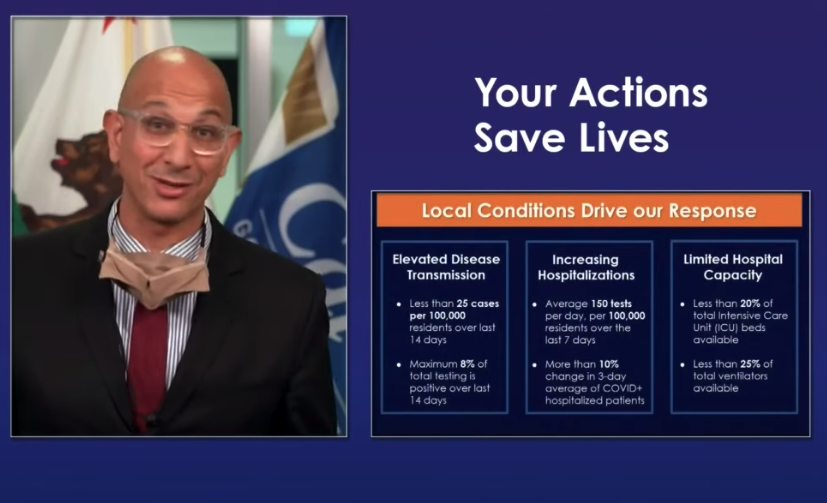Orange County has been added to a list of 19 counties being closely monitored by California officials over ongoing coronavirus concerns.
Gov. Gavin Newsom on Monday highlighted that those counties represent 72% of the state’s population, and explained criteria health officials use to determine if reopening efforts need to be scaled back, or “dimmed.”
Orange County reported its highest weekly coronavirus death toll last week, and now has the third-most cases in California, the Los Angeles Times reported.
While all 58 California counties are being monitored by the state, the 19 on the watchlist meet criteria that officials find concerning: elevated disease transmission, increase in hospitalization rates and limited hospital capacity, California Health and Human Services Agency Secretary Mark Ghaly said.

Once on the list, the counties can receive technical assistance and support from the state. But if cases reach “alarming” levels, the state can identify additional sector closures or even reinstate the area’s stay-at-home order.
On Sunday, Newsom ordered the closure of bars in seven counties, including Los Angeles, and recommended that eight additional counties do the same.
“The bottom line is, we’re doing this because we have seen an increase in the spread of this virus,” Newsom said Monday in justifying the closure of bars. “We need to take further steps and that’s exactly what we did this weekend.”
California has seen a 45% increase coronavirus cases over the last seven days,, Newsom said.
He explained that as a whole the state’s coronavirus positivity rate stands as 5.5%, but is much higher in some counties. In Imperial County, for instance, the positivity rate has reached a staggering 23%, leading Newsom to recommend that county officials reinstate their stay-at-home order.
He said that each county is different in terms of determining a cause for a rise in cases, but particular areas of concern where contact tracing might be difficult are family gatherings and bars.
Health officials found, for example, that in Sacramento County, an increase in cases can be attributed to family gatherings. While in San Bernardino County, where hospitals are nearing surge capacity, a rise in cases is due to an outbreak of coronavirus cases in local jails and skilled nursing facilities, as well as community spread. And last week, officials highlighted that the spike in cases in Imperial County can be traced to increase movement into the border county from both Mexico and Arizona.
As of Monday morning, California had a total of 215,580 coronavirus cases, with 5,935 deaths, according to an L.A. Times tracker.











